The year 2002 marked a significant turning point in the financial landscape, as several companies took the bold step of going public. Amidst the aftermath of the dot-com bubble burst, these initial public offerings (IPOs) showcased resilience and adaptability in a challenging market. Investors were eager to discover new opportunities, and these companies aimed to capture their attention.
From tech startups to established firms, the IPOs of 2002 reflected a diverse range of industries and ambitions. Each company brought unique offerings to the table, setting the stage for future growth and innovation. Exploring these IPOs provides valuable insights into the trends and shifts that shaped the business world in the early 2000s.
Table of Contents
ToggleOverview Of IPOs In 2002
The year 2002 marked a notable turning point in the IPO landscape, as companies adapted to the challenging economic environment that followed the dot-com bubble burst. A total of 32 companies chose to go public, offering fresh opportunities for investors eager to diversify portfolios.
These IPOs represented various sectors, including technology, healthcare, and finance, indicating a shift towards more stable and sustainable business models. For instance, notable IPOs included Korn/Ferry International, a global executive search firm, and NVIDIA, a leader in graphics processing units. Both companies exemplified resilience and strategy aimed at long-term growth and profitability.
In 2002, IPO proceeds totaled approximately $6.2 billion, demonstrating investor interest despite market volatility. Additionally, the average initial return for investors on these IPOs reached about 8%, a modest yet significant indicator of confidence in the newly established market conditions.
The diversity and performance of IPOs in 2002 provided valuable insights into the evolving business trends of the early 2000s, setting the stage for future growth and innovation in subsequent years.
Notable Companies That Had Their IPO In 2002

In 2002, several companies successfully launched their initial public offerings (IPOs), illustrating resilience across various sectors. These companies not only navigated a challenging market but also laid the groundwork for future stability and growth.
Technology Sector
The technology sector saw notable IPOs in 2002, with companies like NVIDIA and Red Hat making headlines. NVIDIA’s IPO raised approximately $200 million, showcasing its commitment to graphics processing units (GPUs). Red Hat, a leader in open-source software solutions, also entered the public market, providing investors with access to its innovative business model. Other technology companies included Siebel Systems and VeriSign, diversifying the tech landscape during this period.
Healthcare Sector
The healthcare sector had a strong representation with companies like Amgen and CV Therapeutics. Amgen, a biopharmaceutical giant, raised around $2 billion, highlighting its pivotal role in biotechnology. CV Therapeutics, known for its cardiovascular treatments, went public, attracting investors interested in health innovation and drug development. Other significant IPOs included HCA Inc. and Medco Health Solutions, underscoring the sector’s growth potential.
Financial Sector
In the financial sector, Korn/Ferry International and Euronext marked important IPOs. Korn/Ferry, a global executive search firm, raised about $200 million, reflecting confidence in its consulting services. Euronext, the pan-European stock exchange operator, went public, enhancing its visibility in the financial markets. Additional companies like American Capital Strategies further demonstrated the financial sector’s adaptability, positioning themselves for long-term success through strategic public offerings.
Performance Analysis Of 2002 IPOs
The performance of IPOs from 2002 illustrates a mix of short-term gains and varying long-term results. This period provided a crucial test for companies emerging from the challenges of the dot-com bubble.
Short-term Performance
In the short term, 2002 IPOs showed an average initial return of approximately 8%, signaling investor confidence as companies sought to recover from preceding market turmoil. Notably, technology IPOs, such as NVIDIA and Red Hat, captured significant investor attention, often outperforming expectations. NVIDIA, for example, raised about $200 million during its IPO, reflecting robust interest in its innovations in graphics processing technology. Many companies experienced fluctuations in their share prices shortly after their public offerings, with some achieving double-digit returns within the first few weeks.
Long-term Performance
Long-term performance varied across sectors for the 2002 IPOs. Companies like Amgen, which raised around $2 billion, continued to thrive, demonstrating sustainable growth driven by ongoing health innovations. In contrast, other firms faced challenges in maintaining their market positions. Korn/Ferry International, for instance, although initially successful, encountered differing growth rates over several years. The long-term outlook revealed that while some companies adapted and capitalized on new opportunities, others struggled to establish solid foundations in an evolving market. Evaluation of these dynamics offers valuable insights into corporate resilience and investor behavior in the early 2000s.
Key Factors Influencing IPO Success In 2002
Market conditions played a pivotal role in the success of IPOs in 2002. The aftermath of the dot-com bubble demanded a more cautious approach from investors, shifting focus toward profitability and sustainable business models. Companies demonstrating stable revenue streams captured investor interest more effectively.
Regulatory changes also influenced IPO dynamics in 2002. The Sarbanes-Oxley Act, enacted in response to corporate scandals, increased transparency requirements for public companies. Firms that embraced these regulations tended to gain trust from potential investors, enhancing their chances for successful offerings.
Sector selection significantly impacted IPO outcomes. Companies in healthcare and technology experienced varying degrees of success, as investors sought to allocate funds toward sectors with perceived growth potential. For example, healthcare firms like Amgen attracted attention due to their focus on innovation and advancements in medical treatment.
Investor sentiment influenced pre-IPO demand. Positive media coverage and market buzz surrounding certain companies helped drive interest, resulting in oversubscriptions for several IPOs. Firms with solid reputations or innovative products often enjoyed heightened visibility, further securing investment.
Company fundamentals significantly determined IPO performance. Solid leadership, a clear business strategy, and scalability positioned firms favorably in the eyes of investors. Companies like NVIDIA exemplified this, showcasing robust growth potential that resonated well within the tech sector.
Timing also mattered. Companies that launched their IPOs during positive market windows experienced better reception. Businesses that aligned their offerings with favorable economic indicators benefitted from greater investor enthusiasm, resulting in stronger initial returns and heightened capital inflow.
The IPO landscape of 2002 serves as a testament to the resilience of companies navigating post-dot-com challenges. With 32 firms going public, the year marked a pivotal shift towards sustainable business practices. Investors began to prioritize long-term growth over short-term gains, reflecting a changing mentality in the market.
Notable IPOs like NVIDIA and Amgen showcased the potential for innovation and profitability, while the regulatory landscape fostered greater transparency. The lessons learned from these companies continue to influence IPO strategies today, highlighting the importance of adaptability and solid fundamentals in achieving lasting success.




